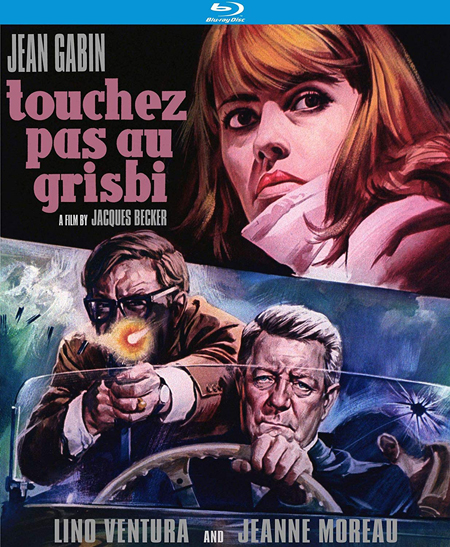
“TWO
JEAN GABIN CRIME NOIRSâ€
BY RAYMOND BENSON
The
French caught on to Hollywood’s wave of crime movies in a big way. In fact, the
French critics coined the term film noir to describe the types of
B-budget, angst-ridden, expressionistic, hard boiled flicks that were made
throughout the 1940s and 1950s in America. French filmmakers had been toying
with this style of crime picture since the late 1930s, but in the 50s, they,
too, emulated what Hollywood had been doing—only they notched up the violence
and the darkness.
Classic
French actor Jean Gabin, who became known to U.S. and U.K. audiences with his
superb performances in Jean Renoir pictures of the 30s (Grand Illusion, The
Human Beast) and early gangster flicks (Pépé le Moko), rejuvenated his
career in the 50s by starring in several of these European gangster films.
Gabin, who might be described as a French mixture of Spencer Tracy and Humphrey
Bogart, was a wonderful, charismatic actor who could play tough guys with a
touch of empathy, the same way Bogart could.
Touchez
pas au grisbi (1954),
which translates to, roughly, “Don’t Touch the Loot,†was released in the U.K.
as Honour Among Thieves and apparently in the U.S. as simply Grisbi.
Gabin is Max, a high-level gangster who has just pulled off a daring heist of
gold bars. The idea is to lay low and fence the gold when it’s safe.
Unfortunately, a dastardly femme fatale throws a monkey wrench into the
plan. Max’s partner, Riton (René Dary) has said too
much to his burlesque dancer girlfriend, Josy (a feisty young Jeanne Moreau),
who of course blabs it to Angelo (Lino Ventura) a rival gang member who is
sweet on her. Trouble ensues.

Razzia
sur la chnouf (1955),
which translates to, roughly, “Raid on the Dope, or Raid on the Drugs,†was
released in the U.S. as simply Razzia. In this picture, Gabin is “Henri
from Nantais,†another high-level gangster working in the U.S., who is summoned
to France to take over and improve the heroin distribution operation run by a
large syndicate. Henri manages a restaurant as cover, and then proceeds to
clean house. In the process, he becomes romantically involved with the
restaurant cashier, Lisette (the scintillating Magali Noël).
As Henri lays down the law among the men, the body count increases, culminating
toward an explosive climax.
Both
pictures are terrific, but the edge goes to Razzia. While Grisbi employs
a fascinating character study in Max, the first half is a slow burn and doesn’t
become truly thrilling until the final third—which does indeed erupt in a
brutal violence that was uncommon for the 1950s. Razzia is better
constructed and is more “colorful†(even though it’s shot in black and white)
with the depiction of Chinese and black user drug dens, underworld politics,
and the details of the drug operation. Razzia also has a very satisfying
twist ending. In both cases, the directors, Jacques Becker and Henri Decoin,
respectively, handle the material with firm hands.
Kino
Lorber’s two sold-separately Blu-ray packages contain gorgeous, sharp high
definition 1920x1080p restorations, in French with optional subtitles, and both
also feature an audio commentary by film critic Nick Pinkerton. The Grisbi disk
has some supplements: a fun vintage interview with Jeanne Moreau; an interview
with the director’s son, Jean Becker; and an interview with professor/film
critic Ginette Vincendeau. Note that the information on the back of the jewel
box states that the film’s run time is 83 minutes, when in fact it is 96. Razzia,
unfortunately, does not contain any extras. Both disks offer the original
theatrical trailers, plus other Kino Lorber title trailers.
Any
fan of film noir, the actor Jean Gabin, and/or gritty crime pictures,
will enjoy these two French gems. Sacrebleu!
CLICK HERE TO ORDER "Touchez pa au grsibi" FROM AMAZON
CLICK HERE TO ORDER "Razzia" FROM AMAZON